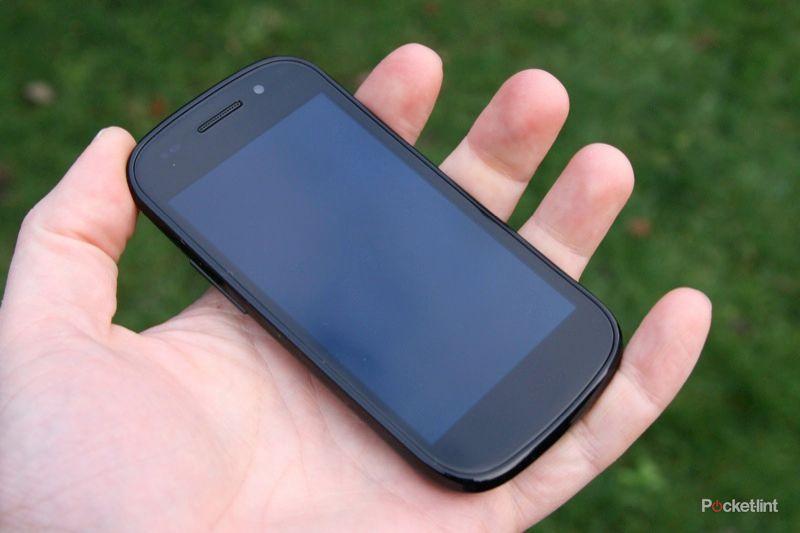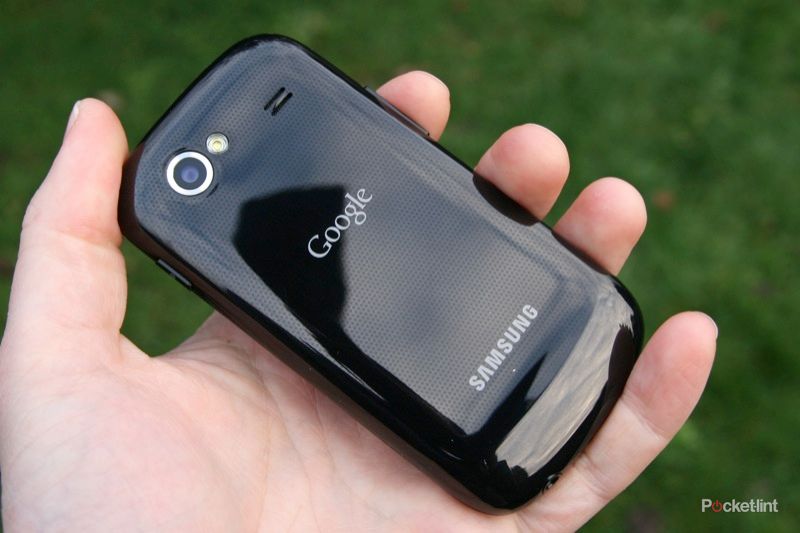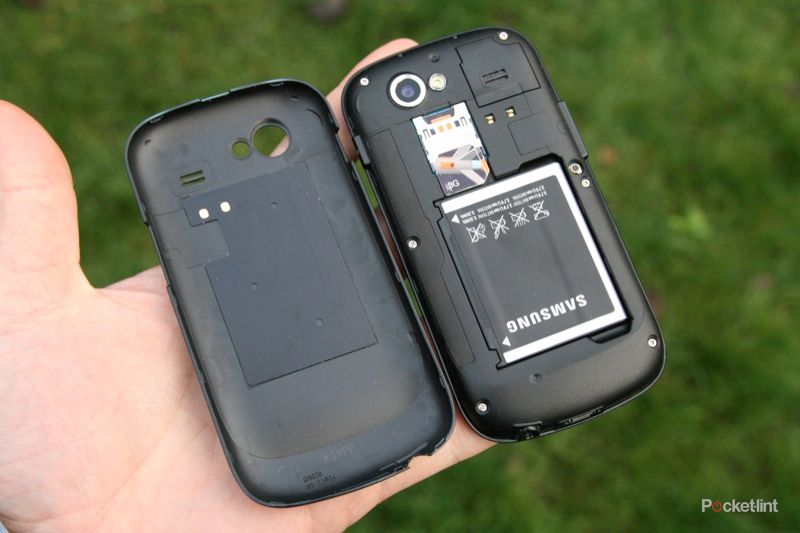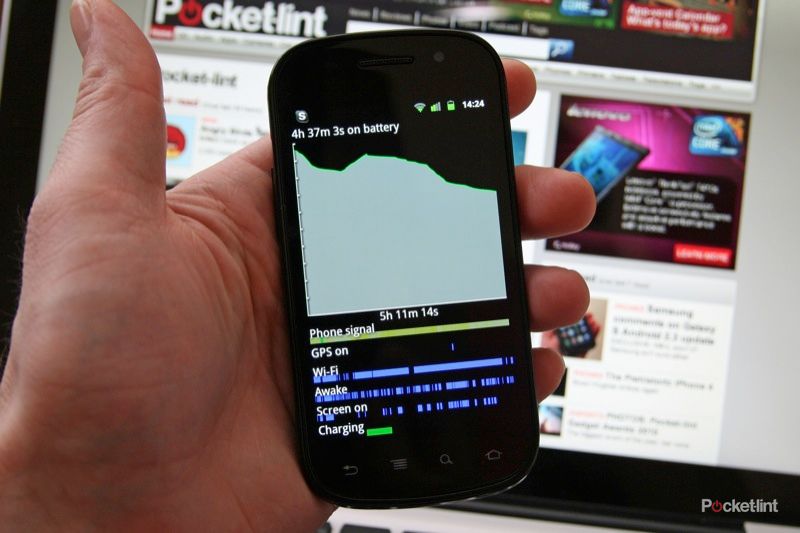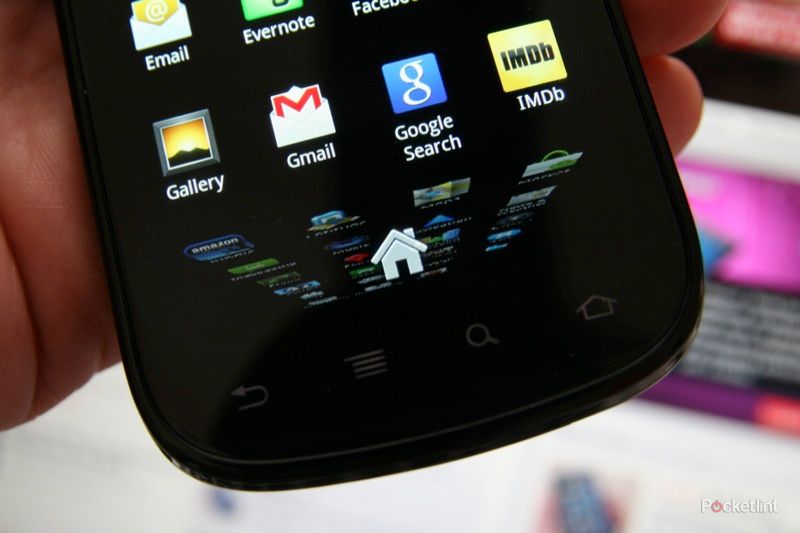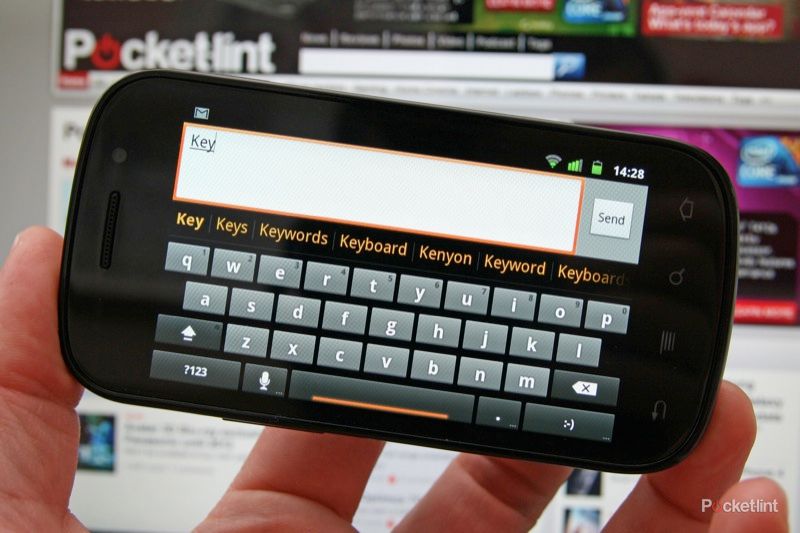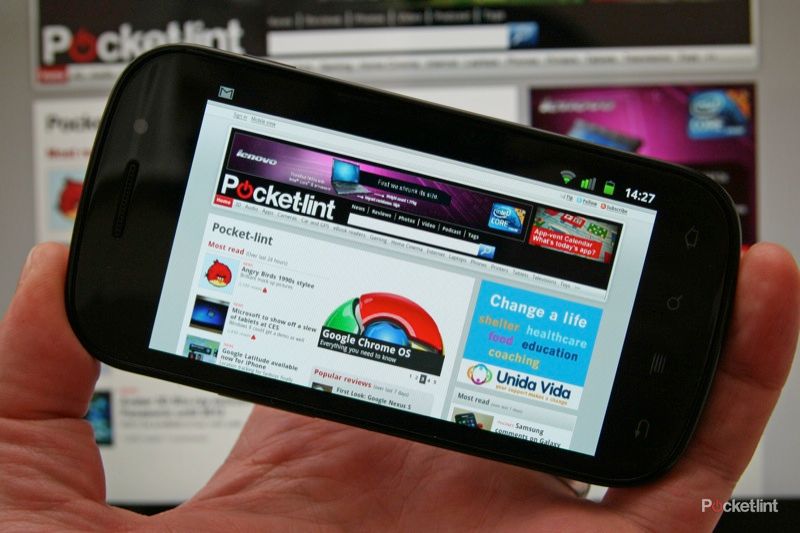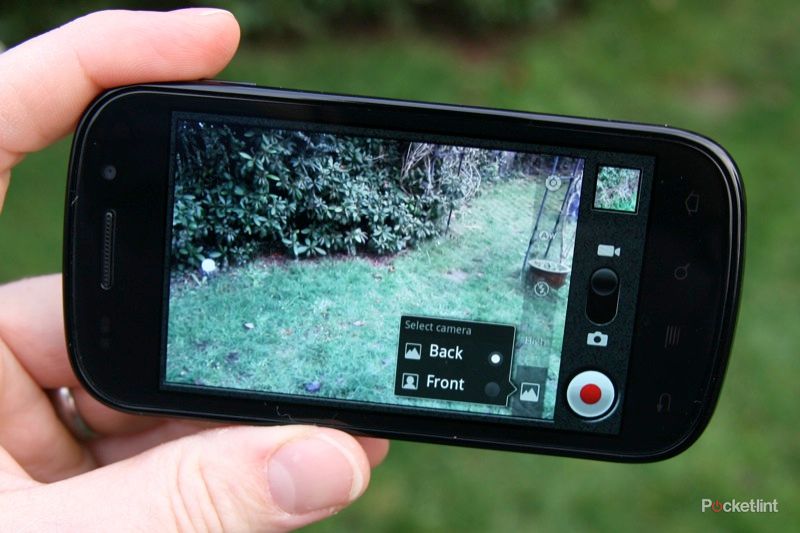Google has turned to Samsung for the next generation of Nexus device, this time known as the Google Nexus S. The “S” heritage plays it straight down the line as an evolution of the Samsung Galaxy S.
Our quick take
We love the hardware the Google Nexus S presents. Even if it is “just” an update of the Samsung Galaxy S (remember we loved that too…) the curved screen and the shapely back make the Nexus S a distinctive and comfortable phone to use. The screen is a star too and we’ve been singing the praises for Super AMOLED for a while, with the Nexus S bringing bucket loads of colour to the party.
But does the Google Nexus S have a unique proposition? Is there anything it does that you can’t find elsewhere? One thing is that you are unhampered by third-party tinkering with your phone. Some say that Android is still too raw as a consumer operating system, but we have to disagree. Android in its naked form is slick, fast and powerful; it is refreshing to come back to the basic underlying OS and get away from all the additional layers that manufacturers plaster on top.
The downside is that you are then left to fill in the gaps yourself. The Nexus S isn’t the most fully featured phone out of the box, with Motorola, HTC and Samsung themselves offering a range of extras you simply don’t get here.
You may also have to pay a lot up front for the Google Nexus S. Priced at £549 SIM free in the UK from Carphone Warehouse or Best Buy; Carphone Warehouse are also offering a range of deals with a contract starting at £35. If Android is what you want, this is the purest form you’ll find and it is well worth considering.
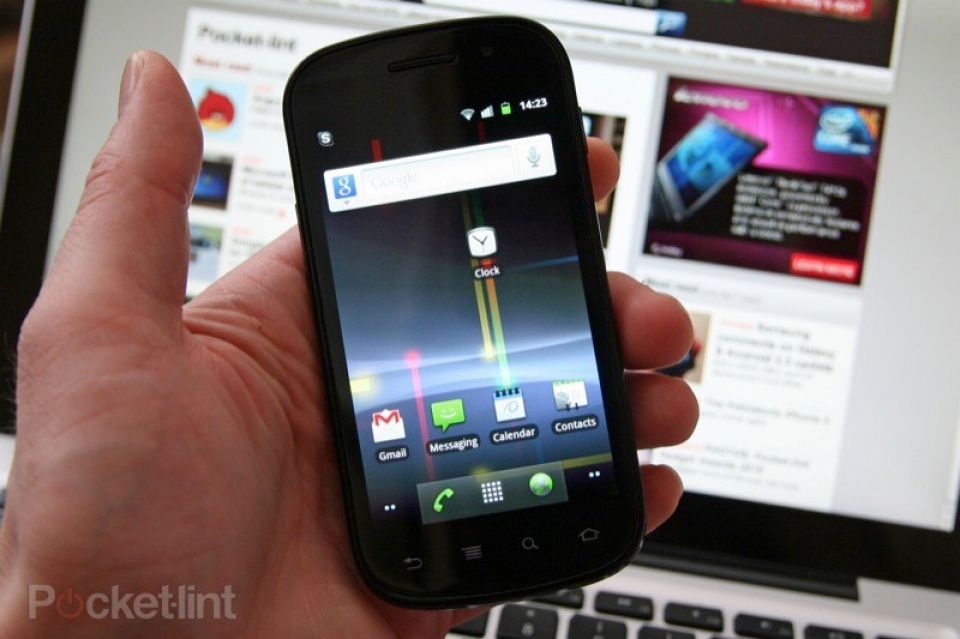
Google Nexus S - 4.5 / 5
| FOR | AGAINST |
|---|---|
|
|
Lift the Nexus S from the box and two things strike you. Firstly, caught at the right angle, the face of the Nexus S is almost entirely free of blemishes. The Super AMOLED screen with its deep blacks blends into the seamless bezel and, as Apple is wont to do, the front is covered in a single piece of glass. Only the grill for the ear speaker and the front facing 640 x 480 camera pierce that pristine face.
Of course it isn’t flat, with marketeers jumping on the “Contour Display” as a practical enhancement. Does it fit your face better? Perhaps. Does it make any difference in daily use? Probably not. But that’s the thing about interesting design - it doesn’t have to fulfil a practical purpose - looking good is good enough. And look good the Nexus S does.
Flip the Nexus S over and you are struck by the similarity to the Samsung Galaxy S. It is curvier, the bulbous bottom has been plumped up slightly and the opening for the single LED flash now sits alongside the 5-megapixel camera, but otherwise it is very close to its Samsung cousin. And that similarity extends to construction materials.
The most commonly criticised element of the Samsung Galaxy S is the backplate and we can see that carrying through to the Nexus S. Again it is plastic, so you don’t get quite the same wow factor as you might from the lusciously crafted HTC rivals, or the premium construction of the Apple iPhone 4. However, there are plenty of Samsung Galaxy S owners out there who are perfectly happy with the construction of their phone, and at 129g, it is relatively light for a phone of this size (63 x 123.9 x 10.88mm).
The result is a device that nestles down beautifully in the hand. The bulbous bottom fits into your palm and provides support, so despite the glossy finish, it feels secure when you hold it. Everything falls within easy reach too, so one-handed operation is easy. The controls are touch-sensitive and sit along the bottom of the screen, backlit so you can see what you are doing, offering (from left to right) back, menu, search and home. The arrangement of the controls seems to favour use in the right hand, given the common use of the back “button”, but we didn’t have a problem either way round.
Peel off the back cover and the Nexus S throws up one of its controversial points – there is no microSD card slot. That means no memory expansion over the 16GB you get on-board. For some this might be a real deal breaker, but it’s still a generous amount of memory, as we’re sure many of those complaining about it are currently walking around with a 2 or 4GB card in their phone. It means that if you want to transfer content, you’ll have to hook your Nexus S up to your computer, rather than loading up a memory card. The Nexus S refers to its internal memory as “USB storage” and when you connect to your PC, this is what you get access to.
Sitting in the back you’ll find a 1500mAh battery which gives the phone a decent day’s worth of juice. With average use you’ll find it sees you through the day, but heavy calling, data use or settling down to watch a little video will of course see it deplete much faster. In truth, the only time we found ourselves with a flat battery at the end of the day was when we had to suddenly roll out the free Google Maps Navigation for a 40-minute journey when we found our satnav had died. We got a day and a half from the battery over the weekend, when usage was a little lighter.
Battery life is one good reason for not stepping up the processor clock speed. Some have said the Google Nexus S doesn’t really move forward because it is still 1GHz. Remember that 1GHz today is much better than 1GHz last year and it’s not about the absolute numbers, but rather the performance, which is where these devices should be judged. The 1GHz Samsung Hummingbird processor does just fine, the 512MB RAM is typical, but the HTC Desire HD steps above this with 768MB. Both are sublimely fast.
Both memory and battery use have received more attention in the latest version of Android for which the Nexus S is something of a showcase handset. Android 2.3 brings with it a number of updates and enhancements rather than a slew of new features. For the geeks out there - and there are plenty among the Android fan base - being able to trip out on the graphical representation of your battery use really is the frosting on the Gingerbread, man. This is in addition to the already familiar percentage-based battery use.
Another of the new additions to Android 2.3 is the Manage Apps offering, accessed by punching the menu button from the home page. This takes you through to a four-tab menu, offering a round up of your Downloads, All (apps), USB Storage, and Running. Effectively it offers management and control functions that third-party apps were often used for previously. From here you can, notably, move compatible applications to USB storage with a simple check box and kill running tasks you don’t want.
Visually Android 2.3 looks pretty much the same as Android 2.2, a few tweaks to the status icons are especially noticeable. You get the same arrangement of side-scrolling homepages that you can customise as you like, dropping widgets and shortcuts with merry abandon. One of our favourite little details is the way the screen blinks out like an old cathode ray tube turning off.
The result is a phone that is slick and fast to navigate. Applications launch with speed and there is little sign of any delays as you get down to business with the Nexus S. Running on pure Android also helps bring to the fore how much Android does outside of the extras that are lathered on over the top. Twitter and Facebook already integrate with your contacts, as will Skype; your Picasa album will offer itself up in the Gallery alongside your local content. You even get weather supplied by the Weather Channel sitting in the Clock app. It’s just a question of how far you want to go with these features, as to whether another device will ultimately serve you better.
Of course you get that core Google experience, with seamless syncing with your Google contacts, calendar and mail accounts. You can also have your Google search history incorporated, if such a thing doesn’t frighten the bejesus out of you. You also know that you are going to be head of the pack for updates to Android, you’ll get Flash video support in the browser and all the benefits of the Android Market and its rapidly growing application offering.
What you won’t necessarily get are extras. This is where the battleground really lies for the future. The Google Nexus S isn’t the best multimedia device for example, video formats supported at core level are rather scant and it has no interest in any content you might have on a media server. Some will argue that this is exactly what the Android Market is there for, but for some customers who’ll pick a smartphone that already has these features.
One of the most dramatic changes that Android 2.3 brings is a new on-screen keyboard. The previous keyboard was a little basic, but it worked. Many, we suspect, will have never used the native Android keyboard because this is one of the first areas that manufacturers add their own solution to. The new keyboard makes it easier to get to numbers, punctuation and special characters using multitouch. Previously you’d have to toggle between character sets, now you simply press and hold the button to access the character set you want, as if using a “shift” or “alt” button on a conventional keyboard. The previous toggle option is still present, so if you are using one hand you’ll find that text entry is pretty much as it was before. You can also swipe from the ?123 up onto the keyboard to directly select a character, but you'll then have to hit it again to return to the regular character set. In reality, it works best with two-handed operation in landscape.
You can also use press and hold on other characters to bring up alternatives. The top line offering up numbers on a long press, or letting you swipe across to access accented characters. Having the option to either “shift” or toggle does take some getting used to, but it all falls into place pretty quickly, with text entry being nice and fast. It is certainly responsive too, which is very often the most important factor.
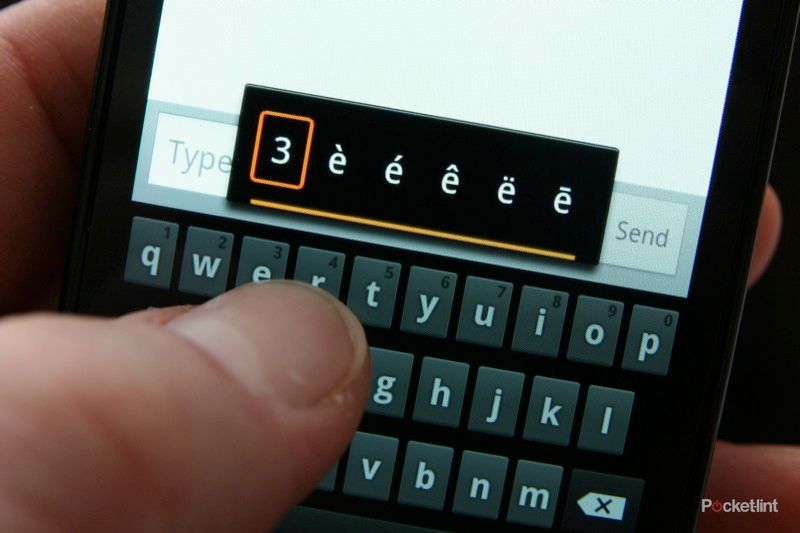
Spelling suggestions and predictions range across the top of the keyboard meaning you can very often type three or four characters of a long word before hitting the prediction and moving on. This does mean you lose a little more space to the whole text entry system as a whole, but you get a little more control than you do from Apple’s tiny word correction and “x” to avoid it that frustrates many iPhone users.
Copy and paste has also been refreshed, meaning you can simply and easily highlight a word, with tags appearing that you can drag out to select a section quickly and easily and text can be selected more widely than previously. The problem is consistency. Sometimes a long press will bring up the selection tags, sometimes it brings up a menu offering to select the word. Sometimes you get no options at all, so you can't select anything.
Google Maps is in place offering up free rudimentary guidance. You’ll also find linking into contacts and the address book, so you can find a location of an appointment with a single click. It almost works, but we did find that on some occasions Google Maps failed to return the location we wanted, instead serving us an advert. Still, it beats having to edit a calendar appointment to get access to the Maps link which was the arrangement on the Samsung Galaxy S.
We mentioned media previously and as it is, without a third-party media player, the Google Nexus S only offers basic video format support. However, we did get it to play 720p MP4 files without noticeably dropping frames or losing lip sync. If you want it to play a wider range of formats, you’ll have to go and find yourself an alternative player. Online video is served better however, thanks to Adobe Flash 10.1 support in the browser, giving you a much wider palette to choose from than just those offered by YouTube.
As with the Samsung Galaxy S, the screen of the Google Nexus S is excellent. The 4-inch 800 x 480 pixel resolution Super AMOLED display offers up deep black and excellent vibrancy when dealing with colours. Some might find it to be a little too saturated, but we don’t mind that on a mobile device where it brings definition and emphasises contrast. What is less good is the greeny-yellow hue the screen takes as it dims. As a result we set it to full brightness and left it there, which isn’t the most efficient when it comes to prolonging battery life.
One of the (currently) unique features of the Nexus S is the inclusion of a near field communication chip (NFC). This is a technology that has been floating around for a while and the inclusion of support in Android 2.3 is interesting, but without a real world application, it is difficult to judge whether this is going to be of any great benefit. If it just leads to an alternative to scanning a QR code to get more information then it is no great shakes, but on this one, we’ll have to wait and see. NFC is operated through an application called Tags and controlled in wireless & networks section of the menu.
Android 2.3 also offers SIP/VoIP support. This means you'll be able to place internet calls without having to use third party applications once set-up. This won't appeal to all, or even register on some people's radar - for us, once we'd installed Skype, which integrates with contacts anyway, we were happily making calls as we would have been on Android 2.2.
The Google Nexus S offers up two cameras, as already mentioned. It is in the minority in doing so, but it seems to be something that Samsung is keen on, as the UK Samsung Galaxy S does too. Android 2.3 adds support for multiple cameras, so you can switch to the internal camera easily. There are a host of settings available in the camera which we’re not really fans of - we suspect that if you care enough to dive into settings you’re likely to take your pictures using an actual camera. To take a picture you have to use the press and hold technique, which focuses the camera and the image captured when you lift your finger off the screen.
The camera performance is respectable in good light and copes surprisingly well indoors too. The flash pulls the normal trick of bringing a slight green cast to things, blowing out close subjects and lacking the power to reach any distance, and in that it is entirely typical. The flash can be rolled out in support of the video too as an illuminator.
Video capture is one of the surprisingly backward elements of the Nexus S. It offers a maximum resolution of 720 x 480 pixels at 30fps. Didn’t Google get the memo? Every one is talking about HD these days and it seems a strange omission. Video capture as it is looks pretty good, but you’ll soon feel a little behind the times when you throw it on to YouTube, or share it with friends on the big screen. You don’t get the same sort of autofocus from the video as rivals offer, instead it is fixed/infinity focus meaning macro video is something of a no-no.
The music player is the stock Android player. You don’t get the niceties that you do from someone like HTC with convenient controls from the standby screen, but at least you get control over the volume at all times. The external speaker on the back is pretty good, but we found it buzzed a little on voice calls at louder volumes. Calling on the Nexus S is comfortable, the phone fitting nicely into the hand and callers coming across loud and clear.
The Nexus S is also loaded with sensors, both the now conventional, like proximity and GPS, but also three-axis gyroscopic sensors. This means the phone has a better sense of how it is moving, which could be a real boon to games developers, something that seems to have been a considered focus in Android 2.3. Google, it seems, wants to follow the iPhone’s success in mobile gaming.
To recap
If Android is what you want, this is the purest form you’ll find and it is well worth considering

